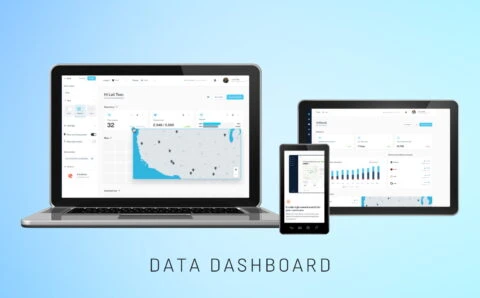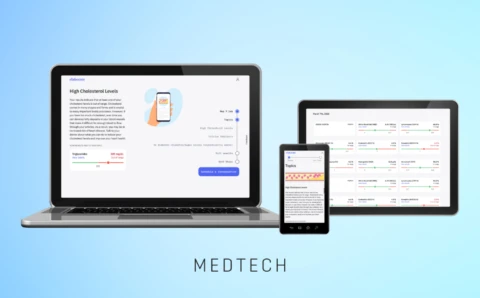
APIs, or Application Programming Interfaces, can enhance businesses by enabling seamless integration of services, improving operational efficiency, boosting innovation, integrating more capabilities, allowing entrepreneurs to adapt quickly to new technologies, and introducing new opportunities within their products.
An API fills in the gap between the different software systems and establishes smooth communication with one another. API integration implies connecting diverse APIs to ensure seamless data exchange and functionality between standalone software solutions. Such an integration is crucial for enhancing user experiences by providing a fully-fledged and highly responsive solution. It streamlines processes, reduces redundancy, and allows users to complete all their procedures without closing the app. For instance, payment gateways like PayPal and Stripe facilitate secure online transactions, while social media integrations allow users to share content effortlessly across platforms. API integration has become an inalienable element of many modern products, delivering operational excellence in a variety of industries. There are currently 4.1+ million API-related repositories on GitHub, introducing value to different use cases and needs and proving the demand for APIs. What’s more, 83% of the entire Internet traffic is covered by API-based services, according to Akamai.
Still, the process of API integration may be accompanied by some tech challenges. In case you are striving to implement more capabilities into your software, you should be aware of these issues and time-tested practices to solve them. In this post, you’ll learn more about the technical nuances that you may encounter on the roadmap to API integration.
Table of Contents:
Common Challenges in API Integration
There is a range of API integration challenges, such as effectively managing compatibility, security, performance, and scalability. These aspects are truly essential for seamless and reliable API integration. Equally important are clear documentation and robust support to guide developers through the integration process and set the path to long-term success.
Compatibility Issues
API integration services can substantially benefit your business. Still, they often introduce pitfalls, with compatibility issues being among the most prevalent. Addressing issues is crucial to ensure seamless integration, maintain functionality, and enhance user experience.
Versioning Problems
Handling different versions can be challenging and time-consuming, which is one of the primary API implementation challenges. As APIs modify, new versions often bring in changes that may deprecate existing features, potentially disrupting integrations. Applications must quickly adapt to these modifications to maintain functionality and avoid interruptions. Supporting multiple API versions simultaneously adds complexity to the codebase and demands additional testing efforts as well as maintenance resources.
When a new API version is released, it may cover non-backward compatible changes, such as altered endpoint structures or modified response formats, requiring updates to client applications. Such a procedure can be resource-intensive, particularly when managing dependencies on third-party APIs. Technicians have to stay vigilant about updates to ensure their applications perform correctly and optimally. It’s important to implement effective versioning strategies, like semantic versioning, along with providing detailed changelogs. Such activities help developers anticipate and plan for necessary updates, reducing the risk of integration failures and guaranteeing smoother transitions between API versions.
Different Protocols and Standards
Another major compatibility challenge is the use of various protocols and standards. APIs can follow different architectural styles, such as REST or SOAP, and use data formats like JSON or XML. Ensuring consistent data formats and structures across these diverse protocols can be difficult. Misalignments can lead to data parsing errors, communication failures, and increased development time. Put it in practice, a system primarily using JSON might need a proper conversion tool to integrate with an API that outputs XML. Furthermore, differences in authentication mechanisms, such as OAuth versus API keys, can add another layer of complexity.
Standardizing and harmonizing these differences facilitates a seamless integration experience. This basically requires implementing middleware or adapters that can translate between different protocols and data formats, adding to the overall development effort but providing a more powerful and flexible integration solution. Middleware solutions can act as intermediaries, converting data formats and handling protocol-specific nuances, thereby simplifying the integration process for developers. Besides, the adoption of API management platforms can streamline the integration by equipping tech teams with tools for monitoring, security, and performance optimization.
Security Concerns
Security is one of the major API challenges, spanning various aspects that must be diligently handled. In fact, according to Salt Security insights, 95% of respondents report difficulties in containing API-related incidents, and 23% of organizations have suffered a breach, compromising their sensitive data and critical systems. Besides, 91% of organizations had an API security incident in 2020.
Authentication and Authorization
Implementing secure authentication and authorization mechanisms is a vital strategy for securing API integrations. Authentication verifies the identity of users or systems accessing the API, while authorization determines their access level to resources and operations.
OAuth is a popular standard for token-based authentication. Users can grant limited access to third-party applications without revealing their credentials. OAuth implies setting up an authorization server, managing tokens, and ensuring secure storage and transmission. It boosts security by minimizing credential theft and providing precise access control.
API keys are more straightforward to implement and are often used for server-to-server communication. These unique identifiers authenticate requests linked to a specific user or application. To save API keys, best practices incorporate generating unique keys, storing them securely, and regularly rotating them to eliminate exposure possibility.
Another tried-and-true strategy is permissions management through role-based access control (RBAC), which ensures that users have only the necessary admissions, reducing unauthorized access risks.
Data Privacy and Compliance
Handling sensitive details securely is crucial in API integrations, especially when it comes about personal or financial data. Ensuring data privacy requires encryption both in transit and at rest. Using HTTPS and TLS protocols for data transmission protects against eavesdropping and man-in-the-middle attacks, whereas AES encryption secures data stored on servers.
Compliance with regulations like the General Data Protection Regulation (GDPR) and Health Insurance Portability and Accountability Act (HIPAA) is essential for organizations managing personal data. GDPR, applicable in the EU, mandates strict data protection measures, such as obtaining user consent, allowing data access and deletion, and reporting breaches within 72 hours. GDPR practices require lawful data processing, thorough data mapping, and strong security protocols.
HIPAA, relevant to U.S. healthcare organizations, sets standards for protecting patient information, requiring regular risk assessments, controlled access to ePHI, and secure communication channels. Regulations like the California Consumer Privacy Act (CCPA) and Payment Card Industry Data Security Standard (PCI DSS) are also critical for comprehensive data protection, legal risk mitigation, and maintaining user trust. You should stay updated on the guidelines relevant to your business to ensure absolute, ongoing compliance.
Streamline with Expert API Integration
Optimize your business with seamless API integration services. Reduce complexity and boost productivity with expert solutions.
Rate Limiting and Quotas
API rate limits control the traffic an API can handle within a specific period. Effectively addressing these limits is a key aspect of handling API management challenges, as it helps prevent abuse and ensures consistent performance.
Understanding API Rate Limits
For API providers, rate limiting is vital for maintaining service stability and reliability by capping the requests a single client or user can make. This prevents abuse and server overload and guarantees consistent performance across all users.
For software engineers, grasping rate limits is essential to keep their applications operable and efficient. Exceeding these limits typically leads to errors, such as the HTTP 429 (Too Many Requests) status code. To mitigate the impact, developers often use caching, storing responses to frequent requests to cut down the need for repeated API calls. Another technique is implementing retry logic, where the application waits before retrying a request after hitting the limit. Combining this with exponential backoff helps manage rate limits effectively without overloading the server.
Quota Management
Aside from rate limits, API providers often enforce usage quotas that cap the total number of requests or data transferred over a more extended period, such as daily or monthly limits. Effective quota management is essential for applications that heavily depend on external APIs.
To handle API usage quotas, technicians should track and log their API usage to evaluate requests and data consumption. The results of this assessment will enable them to identify patterns and adjust usage to stay within limits. Optimizing API calls is another core strategy – consolidating multiple requests into a single call or eliminating unnecessary ones can help maximize the available quota.
Implementing fallback mechanisms is also a smart approach; if an application approaches its quota, it can switch to alternative data sources or reduce functionality until the quota resets, ensuring continued operation. Last but not least – businesses that frequently reach their limits may benefit from negotiating higher quotas or premium access with API providers, often available through tiered pricing models.
Error Handling and Debugging
Error handling and debugging ensure that systems remain resilient and failure-resistant even when issues arise. In case you hire API developers with profound experience, they’ll know how to handle different types of API errors and effective debugging practices that can significantly enhance the robustness of your software.
Types of API Errors
Client-side errors (4xx) occur when the client sends a request that the server cannot process due to issues on the client’s end. Let’s take a look at some common illustrations below.
-
- 400 Bad Request. Invalid syntax or missing parameters.
- 401 Unauthorized. Missing or incorrect authentication credentials.
- 403 Forbidden. Insufficient permissions to access the resource.
- 404 Not Found. The requested resource is not available.
Server-side errors (5xx) happen when the server fails to execute a valid request due to internal issues. Here are some key instances:
-
- 500 Internal Server Error: A generic server malfunction.
- 502 Bad Gateway: Invalid response from an upstream server.
- 503 Service Unavailable: Server overload or maintenance, requiring a retry later.
Effective Debugging Practices
Efficient debugging enables technicians to decrease API integration time, as well as identify and handle issues, ensuring minimal disruption to users and services.
Logging
Comprehensive logging is a primary part of effective debugging. By recording detailed information about API requests, responses, and any errors encountered, developers can grasp the root cause of an issue. Logs should cover timestamps, error codes, and relevant request and response data. This data is necessary for diagnosing issues, especially in production environments where replicating bugs can be difficult.
Monitoring
Implementing robust monitoring systems helps detect and alert developers to issues in real-time. Monitoring tools can track API performance metrics such as response times, error rates, and traffic patterns. When anomalies are detected, alerts can be sent to the development team, allowing for prompt investigation and resolution before issues escalate.
Troubleshooting
Troubleshooting refers to systematically analyzing and coping with issues as they arise. This might cover reviewing logs, reproducing errors in a controlled environment, or examining the API documentation for potential misconfigurations. Productive troubleshooting requires a methodical approach to isolate the problem and determine its underlying cause.
Tools and Techniques for Efficient Debugging
Several tools and techniques can streamline the debugging process. For instance, API testing tools like Postman or Insomnia allow developers to simulate API requests and observe responses, allowing them to identify issues with requests or server behavior. Automated testing can also be integrated into the development pipeline to catch errors before they reach production. Tools like New Relic or Datadog provide advanced monitoring and logging capabilities, offering deeper insights into API performance and reliability.
Performance and Latency
Performance and latency directly influence the user experience and the efficiency of the overall system. As APIs become central to application architecture, optimizing their performance ensures that applications run smoothly, even under demanding conditions.
Optimizing API Calls
Minimizing the number of API requests is one of the most effective ways to enhance performance. Every API call incurs a certain amount of overhead, covering network latency, processing time, and response handling. By cutting down the number of calls, applications can decrease these overheads, resulting in faster response times and less strain on both client and server resources. Request batching, where multiple data requests are combined into a single API call, can significantly reduce the frequency of interactions between the client and server, skyrocketing software operation.
Another important strategy for reducing latency is caching. Caching implies storing frequently used data in a temporary storage location so that subsequent requests for the same data can be served faster without the need to query the API repeatedly. Implementing cache mechanisms at various levels, such as client-side, server-side, or even within intermediary proxies, can lead to substantial elevations in response times. Cache headers effectively allow clients to validate and reuse cached data, decreasing the need for redundant API calls.
Optimizing API endpoints is also a great technique for minimizing latency. Refining query parameters, indexing databases, and optimizing the code that handles requests help ensure that responses are generated as efficiently as possible. By carefully designing API endpoints to return only the necessary data and structuring responses to minimize processing time, tech teams can further reduce latency and enhance the overall performance of the API.
Scalability Concerns
As applications scale and user demand increases, handling high traffic becomes a significant challenge. Ensuring that APIs can maintain performance and reliability under load is essential for sustaining a positive user experience. One approach to achieving scalability is via load balancing, which distributes incoming API requests across multiple servers. This strategy prevents any single server from becoming a bottleneck as well as enhances the reliability and availability of the service by ensuring that if one server fails, others can take over the load.
Rate limiting and throttling policies are the mechanisms that control the number of API requests a client can make within a certain time frame, preventing excessive usage that could overwhelm the system. Rate limiting helps protect the API from misuse and ensures that resources are fairly allocated among all users, maintaining overall system stability.
Moreover, horizontal scaling, which is adding more servers to handle increased traffic, can help APIs manage growing demand. However, this approach requires comprehensive planning to ensure that the system architecture can support distributed processing and that data consistency is maintained across all instances.
Documentation and Support
Good documentation and access to support provide the necessary guidance and resources to troubleshoot issues, optimize development, and ensure smooth implementation. In combination, they help developers efficiently employ APIs and avoid potential pitfalls.
Importance of Good Documentation
Clear, comprehensive, and up-to-date documentation allows developers to understand how to implement and adopt an API efficiently. It provides detailed explanations, code examples, and best practices, which help with troubleshooting and ensuring proper functionality. Without thorough documentation, software engineers can face confusion, increased development time, and potential errors, leading to a frustrating integration experience.
Access to Support and Community
Reliable technical support and an active user community are also important. When challenges arise, a responsive team can significantly decrease downtime and resolve problems quickly. An engaged user community can also be a valuable resource, offering shared experiences, solutions to common problems, and collaborative learning opportunities. This collective knowledge base helps developers overcome challenges and optimizes the integration process, ensuring smoother and more successful implementations.
Data Security Challenges
API security is a primary aspect of modern software architecture, as vulnerabilities in APIs directly expose businesses to significant risks.
Let’s consider the common security flaws when it comes to API integration.
- Lack of encryption – leaves sensitive data deciphered during transmission or storage, making it vulnerable to interception.
- Insufficient authentication mechanisms – fails to properly verify the identity of users or systems, leading to unauthorized access.
- Weak access controls – insufficient restrictions on what users or systems can access, increasing the risk of unauthorized data retrieval or modification.
- Improper API rate-limiting – allows attackers to overwhelm the system with excessive requests, potentially leading to denial-of-service (DoS) attacks.
- Failure to validate input – leaves the system susceptible to vulnerabilities like SQL injection or cross-site scripting (XSS), allowing hackers to inject malicious code or manipulate queries.
Tools like OWASP ZAP for penetration testing
To mitigate data security risks when integrating an API, you can use tools such as OWASP ZAP (Zed Attack Proxy). This open-source platform is a dedicated assistant for software engineers, optimizing the execution of penetration testing on APIs by scanning for vulnerabilities and security flaws.
OWASP ZAP performs an automated assessment to detect common obstacles like improper authentication, missing encryption, and insecure endpoints. Regular integration of penetration testing into the API development process allows technicians to determine and address vulnerabilities before they become exploited, ensuring peace of mind for businesses. Consequently, data remains secure, and the API infrastructure is more resilient against attacks.
Regulatory challenges
As a business, you should essentially be proactive in ensuring your APIs comply with obligatory regulations. Failure to meet these compliance standards can expose you to legal risks and fines, not to mention that this undermines customer trust and severely damages your credibility. Regular audits, clear data handling policies, and secure API design are integral to providing ongoing compliance.
GDPR
The General Data Protection Regulation (GDPR) is one of the most comprehensive data protection regulations globally, significantly impacting APIs that process the personal data of European Union citizens. GDPR requires businesses to handle data in a way that respects the privacy and rights of individuals. For APIs, this means ensuring that data is encrypted both in transit and at rest. It also implies providing mechanisms for individuals to access, correct, and delete their data, as well as ensuring that data is only retained for as long as necessary. Furthermore, API developers must incorporate features such as data anonymization and the ability to revoke user consent.
The absence of GDPR compliance can result in heavy fines and reputational damage. In fact, for particularly serious breaches, as outlined in Article 83(5) of the GDPR, the fine can reach up to 20 million euros or, in the case of a company, up to 4% of its total global turnover from the previous fiscal year, whichever amount is greater.
HIPAA
The Health Insurance Portability and Accountability Act (HIPAA) governs the privacy and security of health-related information in the United States. When APIs are used in healthcare applications, they must meet strict HIPAA requirements. According to HIPAA requirements, APIs must ensure that sensitive health data (Protected Health Information, PHI) is encrypted, transmitted securely, and stored under stringent access controls. Developers should incorporate logging features that track all access to PHI and integrate role-based access controls to limit who can view or modify health data. Moreover, businesses must ensure that APIs are capable of performing audit trails to monitor usage and ensure compliance with HIPAA.
As Secureframe claims, violations may incur a fine of $50,000 each, with a yearly cap of $1.5 million for repeated violations. Beyond these civil penalties, criminal charges can be brought for specific offenses, such as knowingly obtaining or disclosing Protected Health Information (PHI) in violation of the regulations or under false pretenses.
Other compliance policies
Beyond GDPR and HIPAA, there are numerous other compliance regulations depending on the region and industry. For instance, the California Consumer Privacy Act (CCPA) mandates that businesses handling data of California residents must allow them to opt out of data sales and request data deletion.
Similarly, financial institutions must comply with the Gramm-Leach-Bliley Act and PCI-DSS when integrating APIs that deal with financial data, ensuring that sensitive financial information is encrypted and access-controlled. For APIs serving customers in multiple jurisdictions, businesses must stay updated with local laws, covering data sovereignty laws that mandate how and where data is stored.
Discover API Benefits for Your Business
Explore how APIs can transform your operations, enhance efficiency, and unlock new growth opportunities. Learn more now!
Best Practices for Overcoming API Integration Challenges
The following best practices ensure a smoother, more reliable integration process that enhances system performance and future-proofs against evolving technological demands. Such techniques can also help you profit from all the benefits of API integration.
Planning and Design
Thorough planning and thoughtful design are essential to handling the challenges of API integration.
Thoroughly Planning the Integration Process
Before beginning the API integration, it’s integral to conduct a comprehensive assessment of the project’s requirements. This refers to diving into the APIs’ functionalities, limitations, and dependencies. Detailed planning helps draw up the roadmap and identify potential setbacks early on, delivering met deadlines, accelerating implementation times, and cutting down API integration costs. Creating a strategy that outlines each step of the integration process, complete with timelines and milestones, ensures a systematic and organized approach to the API integration and brings your project much closer to success.
Designing Robust and Flexible Architectures
A well-designed architecture can mitigate many integration challenges. A modular design enables flexibility, allowing components to be updated or replaced without disrupting the entire system. Incorporating design patterns like microservices positively impacts scalability and maintainability. It’s also suggested to build in error handling and logging mechanisms to identify and rectify issues quickly. Furthermore, API gateways can help manage and secure API traffic, establishing smooth interactions between services.
Testing and Quality Assurance
All-around testing is significant in overcoming API integration challenges and ensuring seamless functionality. Unit testing allows to validation of individual components of the API to verify they work as expected in isolation. Integration testing assesses how different parts of the system interact with each other, confirming that data flows and operations are functioning correctly across integrated systems. End-to-end testing evaluates the complete workflow, guaranteeing that the API integration delivers the desired outcomes from the user’s perspective.
Leveraging sandbox environments for testing is another best practice to go for. Such isolated environments replicate production systems, allowing developers to test API integrations without affecting live applications or real user data. Sandboxes allow safe experimentation, debugging, and validation, helping to identify and resolve issues before deployment. The simulation of various scenarios and edge cases can help ensure that the API behaves as expected under different conditions.
Monitoring and Analytics
The reliable way to effectively overcome API integration challenges is by implementing robust monitoring and analytics practices.
Setting Up Monitoring Tools
Comprehensive monitoring tools allow you to continuously track API performance in real-time. These instrumental kits help identify issues such as latency, downtime, or unexpected errors promptly. By monitoring key performance metrics like response times and error rates, you can ensure the API operates smoothly and liquidate potential problems before they escalate.
Analyzing Usage Data
By examining patterns in how the API is used, you can gain insights into performance bottlenecks, identify areas for improvement, and adjust configurations to improve efficiency. A data-driven approach enables you to create further strategies concerning scaling resources, updating API endpoints, or fine-tuning the integration. Regular analysis also helps anticipate future needs and adapt to changing requirements so the integration remains effective and responsive.
Staying Updated
Keeping up with the latest changes and updates to the APIs you are using refers to regularly reviewing API documentation and release notes. This approach can help you anticipate and prepare for changes such as new features, deprecated functionalities, or version upgrades. Developers can effectively adapt their systems in advance, minimizing disruptions and ensuring continued compatibility. To stay alert, you may subscribe to API provider newsletters, review their blogs, or even participate in webinars or forums. Therefore, you’ll gain insights into upcoming changes and best practices.
Proactive Communication with API Providers
Establishing a good relationship with the provider can facilitate quicker responses to issues and better support. Don’t hesitate to reach out for clarification on documentation or to report any problems you encounter. Regular feedback to the vendor can also contribute to improved API quality and functionality over time.

Spontivly
Our work with Spontivly enabled seamless data integration, delivering faster workflows and crucial insights to more than 70 companies, enhancing success.

Upcomer
Upcomer, the top esports hub, saw a performance boost after we refactored its legacy code, significantly enhancing load times & user engagement.

Elaborate
Elaborate delivers lab results with clarity, offering automated notifications, educational content, and scheduling tools to enhance patient care.
Conclusion
Effective API integration is not a wish but a must for any modern application, yet it requires meticulous planning and ongoing management to overcome the challenges we’ve discussed.
APIs and technology continue to progress while the integration market constantly shifts. As a forward-thinking entrepreneur, you should keep on learning and adapting to stay current with new developments and best practices. Developers must remain involved, delving into new tools and techniques to optimize integrations and harness the full potential of API capabilities.
Successful API integration is founded on a proactive approach to planning, managing compatibility issues, and leveraging support resources.
If you want reliable assistance from a trusted IT vendor, contact PLANEKS. Our dedicated software engineers will examine your business’s concept and peculiarities and carry out seamless API integration, handling all the challenges on their journey. Let’s make your business agile, efficient, and responsive together, taking your opportunities to the next stage.

